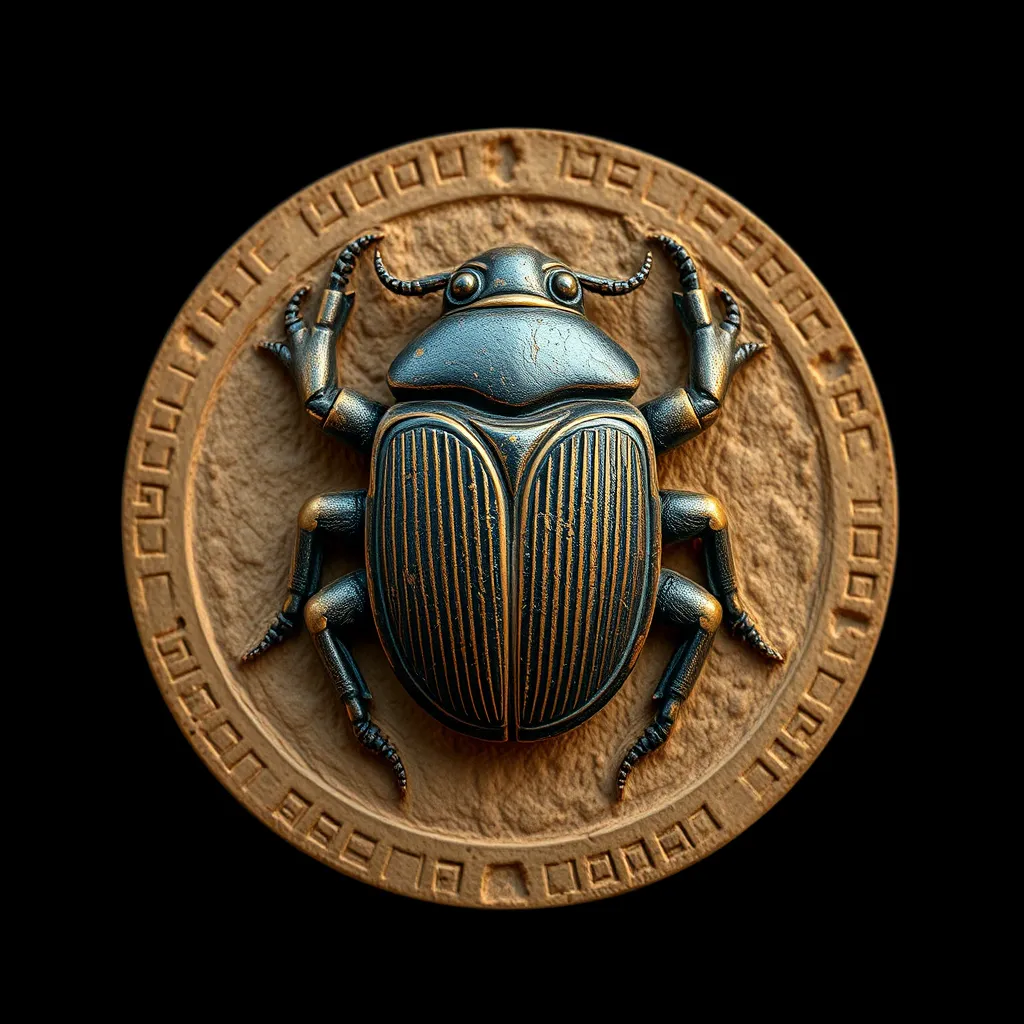The Sacred Scarab: A Symbol of Fate in Ancient Egypt
I. Introduction
The scarab beetle, known scientifically as Scarabaeidae, holds a profound significance in ancient Egyptian culture. Revered for its unique life cycle and behaviors, the scarab became an emblem of transformation and regeneration. Its symbolism permeated various aspects of life and death, influencing the beliefs and practices of a civilization that placed great emphasis on fate and the afterlife. This article aims to explore the multifaceted symbolism of the sacred scarab and its vital role in shaping the destiny of individuals in ancient Egypt.
II. Historical Context of the Scarab in Ancient Egypt
The origins of the scarab symbol can be traced back to ancient Egyptian mythology, where it was closely associated with the sun and creation. The ancient Egyptians observed that the scarab beetle, particularly the dung beetle, would roll balls of dung, which they likened to the sun moving across the sky. This observation laid the foundation for the scarab’s association with the cycle of life and death.
Over different dynasties, the representation of the scarab evolved, reflecting changes in artistic styles and cultural beliefs. For instance, during the Old Kingdom, scarabs were often depicted in a more literal manner, while in later periods, they took on more stylized forms, emphasizing their symbolic meaning rather than their physical characteristics.
III. The Symbolism of the Scarab
The scarab is a powerful representation of renewal and resurrection in ancient Egyptian culture. The life cycle of the scarab, particularly its transformation from a larva to an adult beetle, symbolized the potential for rebirth. This connection to renewal was not only significant in the context of life but also in the afterlife, where it represented the soul’s journey and the possibility of eternal life.
Additionally, the scarab is intricately linked to the sun god Ra, embodying the daily cycle of life, death, and rebirth. Every morning, as the sun rose, the Egyptians believed that Ra was reborn, much like the scarab emerging from the dung ball. This connection reinforced the idea that life is cyclical and that death is merely a transition to another state of being.
The scarab also served as a symbol of protection and guidance. Amulets shaped like scarabs were commonly worn or placed in tombs to offer protection against malevolent forces and to guide the deceased through the dangers of the afterlife.
IV. The Role of the Scarab in Ancient Egyptian Funerary Practices
In ancient Egyptian funerary practices, scarabs played a crucial role. Scarab amulets were often placed with the deceased to ensure safe passage to the afterlife. These amulets were inscribed with prayers and spells intended to protect the deceased and grant them rebirth in the next life.
During burial rituals, scarabs symbolized the journey of the soul and were believed to assist the deceased in navigating the underworld. The presence of scarabs in tombs signified a strong belief in the afterlife and the importance of safeguarding one’s fate beyond death.
V. Mythological Associations with the Scarab
The scarab is deeply embedded in Egyptian mythology, with numerous stories and myths highlighting its divine connections. One of the most notable associations is with the god Khepri, often depicted as a scarab or a man with a scarab head. Khepri was believed to represent the morning sun and was associated with creation and transformation.
According to the creation myth, Khepri rolled the sun across the sky, symbolizing the daily renewal of life. This myth underscores the scarab’s role as a harbinger of new beginnings and the cyclical nature of existence.
VI. Scarab Artifacts and Archaeological Findings
Numerous scarab artifacts have been uncovered in archaeological sites, providing valuable insights into ancient Egyptian beliefs and practices. Some significant findings include:
- Scarab amulets: These small, often intricately carved pieces were commonly found in tombs and were believed to offer protection.
- Engraved scarabs: Many scarabs were inscribed with names or messages, serving as personal talismans for individuals.
- Large scarab sculptures: Some sites have revealed monumental scarab statues, often associated with temples and religious practices.
These artifacts not only highlight the artistry of ancient Egyptian craftsmen but also reinforce the cultural significance of the scarab as a symbol of fate, protection, and renewal.
VII. The Scarab’s Legacy in Modern Culture
Today, the scarab continues to inspire contemporary art, jewelry, and fashion. Its image is frequently used in various forms of artistic expression, from paintings to sculptures, reflecting its timeless appeal. Additionally, the scarab’s symbolism resonates in modern culture, often associated with themes of rebirth and transformation.
In popular culture, the scarab appears in films, literature, and even video games, showcasing its enduring fascination. The mystical aura surrounding the scarab captures the imagination, bridging ancient beliefs with modern interpretations.
VIII. Conclusion
In conclusion, the sacred scarab holds a prominent place in ancient Egyptian life, representing fate, renewal, and the journey to the afterlife. Its symbolism transcends time, reflecting the deep-seated beliefs of a civilization that revered the cycles of life and death. The enduring power of symbols like the scarab serves as a reminder of humanity’s quest to understand fate and the mysteries of existence.




